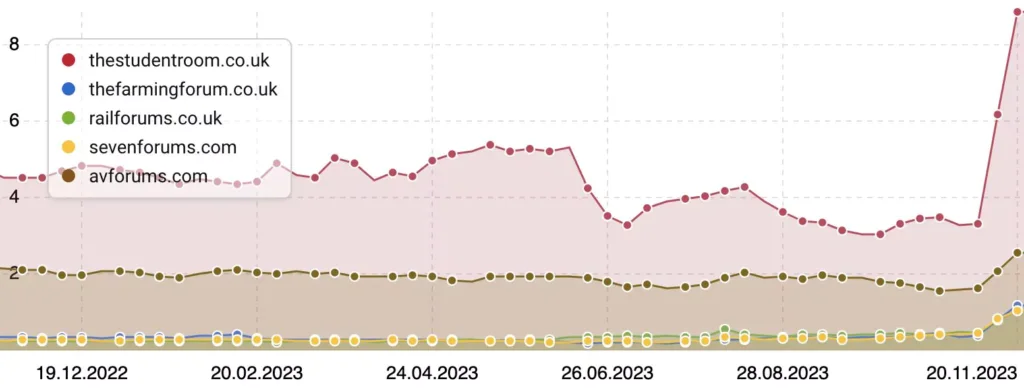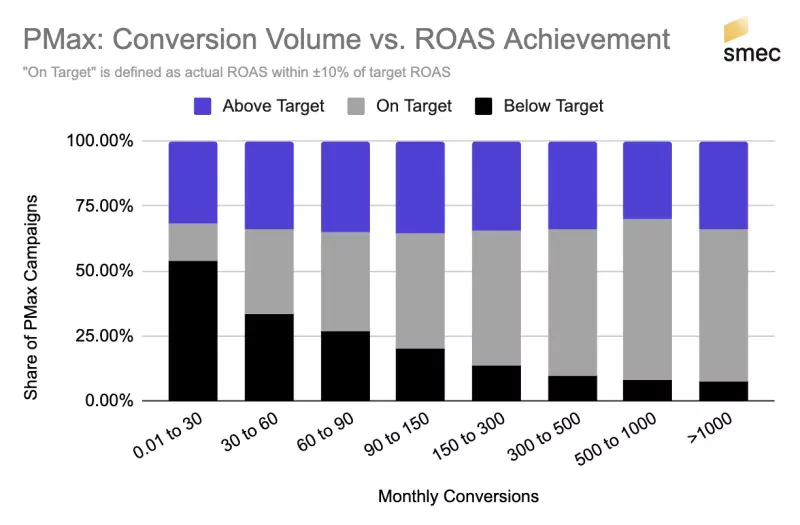Learn the critical elements and tactical advantages for developing effective marketing plans, from anecdotal observations to statistically significant facts.
The inherent emphasis on data in digital marketing is one of its most alluring features.
Adopting a method is facilitated by favorable data surrounding it. Similarly, getting support to try a strategy can be challenging if it hasn’t been validated.
Research is the primary means by which digital marketers establish that data confidence. Usually, these research can be divided into two groups:
Anecdotal: There are few data points, but the specific mechanics are usually covered in much more detail.
Statistically significant: A high number of data points (usually more than 100) that may be compelled to undergo a simpler analysis because of the sheer number of entities under consideration.
In the process of developing a digital marketing strategy, both data sets are useful. Because of this, it’s risky to rely too much on either one.
I thought it might be helpful to look into the following as someone who has worked for companies that can release both kinds of data sets and is a frequent user of both:
- Minimum standards for any kind of research.
- What benefits do brands stand to gain from these two kinds of research.
- How to organize your own research.
A few studies from several fields related to digital marketing will be examined in this post.
This is because the fundamental ideas guiding both statistically significant (big data) and anecdotal (little data) marketing disciplines are mostly similar.
Minimum Standards for Every Kind of Research
When conducting research, a typical mistake people make is to assume that the amount of data collected is the sole factor that determines the value of their work.
Sure, having a ton of data is wonderful, but there are other important considerations as well:
What number of variables are taken into account?
What kind of mitigation exists, if any, for excess variables or outliers?
Can the study address its detractors using facts rather than feelings?
Regardless of whether you concentrate on an anecdotal research or a statistically significant one, these three will be the absolute minimum criteria. But there are also some requirements unique to the study.
Anecdotal Evidence
Examining a smaller data set—less than ten accounts, less than a year’s worth of data, etc.—puts much more emphasis on examining the effects of your proposed test both before and after.
Because the study usually displays the consequences of specific activities performed in one account/for one brand, people will want as much detail as possible.
Screenshots will therefore be essential. People aren’t going to take your story seriously if you can’t provide specifics.
Screenshots, however, do not require you to disclose the client you work for. It is reasonable to filter out brand names, but it is not reasonable to omit benchmarks, crucial metrics, and information about whether an initiative benefited from “unfair advantages” (large budgets, branded campaigns, etc.). Anecdotal studies that examine the effects of changes over a few months are a good example of this. This graph from Will O’Harra illustrates the shift in site traffic for “fan” sites vs. big names.

This study, which only examines five sites, is anecdotal in nature, but it does show that the change in quality content requirements can cause sites that would ordinarily have lesser traffic to rise dramatically.
Big Data Research
Anecdotal studies may receive criticism for their lack of specificity, whereas big data studies are given a bit more leeway.
This is so because the number of accounts that speak to a particular trend is their primary metric. This does not, however, imply that big data research are exempt from criticism; rather, the emphasis is shifted.
Big data inclusion criteria must be quite strict. The included entities must be as near to one another as feasible.
Furthermore, numerous entities are usually required for large data research. There must be sufficient volume to support any comments you make regarding a specific trend.
For example, we included over 2,600 accounts from various regions in my Optmyzr study that examined Google match kinds and bidding tactics. (Disclaimer: Optmyzr is where I work.) If we had relaxed the requirements a little bit, we could have added more accounts.
What Value Brands Can Learn From These Two Kinds of Research
It can be tempting to limit your studies to just one kind. Both, nevertheless, have a role and can contribute to a well-thought-out account strategy.
Big data can assist you comprehend broad ideas and trends that may have an effect on your account. These will serve as the guiding concepts, such as:
Which options for the structure are more likely to succeed?
Where to direct your efforts when creating content.
What are people’s financial habits?
Which kind of messaging should be used when in the buyer funnel?
These kinds of lessons are helpful because they provide you with a solid foundation around which to build your plan. They can be helpful for self-sanity checks as well.
For instance, SMEC’s genius Mike Ryan carried out research on the minimum number of conversions required for PMax campaigns to be successful. Although this data is beneficial in all situations, it is useful to realize that it is based on 14,000 campaigns.

We can see from this data that our PMax campaigns need to generate at least 60 conversions over the course of 30 days in order to show respectable results.
If not, it would be worthwhile to consider alternative campaign formats. Though they would be exceptions to the norm, it is quite conceivable for an account to perform well outside of the parameters of this research.
Likewise, the equally astute and enjoyable Google Business Profile listings were the subject of a research by Greg Gifford (Search Labs) to see if “best practices” could withstand scrutiny.
After examining 1,000 dealerships, he and his colleagues discovered that although some best practices continued to hold true, others showed correlation rather than cause.
It will be easier to examine “wild and crazy ideas” if you rely on anecdotal studies. They’re also a great way for people who can take risks to learn about new trends.
How to Establish Your Own Research
Understanding the study’s scope and repeatability is crucial while setting up research projects. Studies that are conducted only once are less helpful because trends are always changing.
Furthermore, you run the risk of muddying the data or failing to adequately answer the crucial question if your scope is too limited or vast.
Make sure there is opportunity for your hypothesis to be proven incorrect.
Without safeguards, data can be manipulated to indicate anything. It is imperative to uphold stringent policies on what is and is not included.


